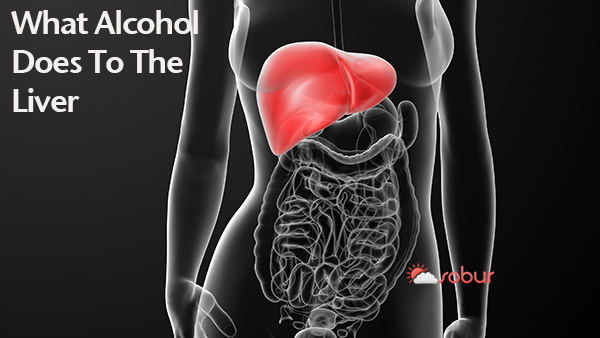
Note: I was inspired to write this following a video I saw on Youtube showing what alcohol does to the liver, it’s worth a quick watch:
Labeled as a ‘demon drink’ by some (not us!), alcohol is not really that bad when taken in moderation. But there is a great risk involved when the level of alcohol intake becomes too high. When this happens, alcohol is already considered toxic and could possibly cause irreparable damage to the body — particularly the liver.
Functions of the Liver
Located just below the ribs, the liver is one of the most significant organs of the human body and is responsible for many essential functions. Its main roles are:
- processing the nutrients in food and converts them into a form that the body can absorb;
- producing bile to assist in the digestion of dietary fats;
- processing medicines to make it more usable for the body;
- fighting diseases and infections;
- regulates cholesterol and blood sugar levels;
- filtering bacteria and toxic chemicals then eliminate unwanted substances from the body; and
- breaking down alcohol.
How the Liver Processes Alcohol
The liver processes alcohol in 2 ways. The first method is by breaking down alcohol, after which it gets metabolized by the liver enzyme called alcohol dehydrogenase (ADH). This enzyme is responsible for processing alcohol into acetaldehyde which is further processed into acetate by another enzyme called aldehyde dehydrogenase (ALDH). Again the acetate is metabolized further and finally exits the body in the form of water and carbon dioxide.
The second method of processing alcohol is by using the alternative pathway, the microsomal ethanol-oxidizing system, in the liver. This process uses a different set of liver enzymes and is employed only when the alcohol level in the body is already too high for the first method to handle. When drinking alcohol becomes a regular habit, the second pathway becomes more active.
Effects of Excessive Alcohol Drinking
People who drink alcohol more often are at a greater risk of liver damage. When the drinking becomes excessive and habitual, it can cause an inflamed liver which may result in liver failure and eventually death.
3 Main Stages of Alcohol-related Liver Disease
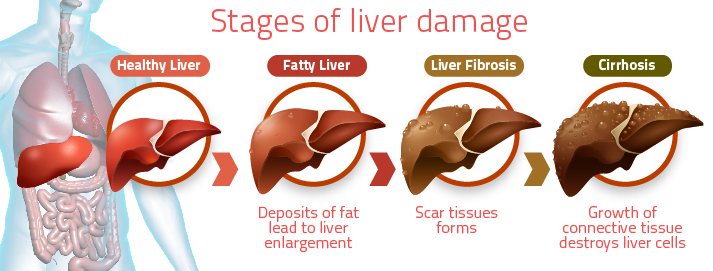
The misuse of alcohol is identified as the main reason for the increase of alcohol-related liver diseases (ARLD) today. Oftentimes, an overlap of the stages of ARLD occurs but each stage can be described as follows:
- Alcohol Fatty Liver Disease
Fats can easily build up in the liver if a person drinks too much alcohol and does so for a few days. This condition is referred to as alcoholic fatty liver disease and it is considered as the first phase of ARLD. There are rarely any symptoms and it is easily reversible. The liver will just return to its normal healthy state if the person totally avoids alcohol intake for two weeks. - Alcohol Hepatitis
The second and more severe stage of alcohol-related liver disease is alcohol hepatitis. But it is important to note that this condition is not in any way related to infectious hepatitis. This happens when the liver tissues suffer inflammation due to a prolonged period of alcohol misuse. In some rare cases, alcohol hepatitis could also happen to those who subject themselves to binge drinking. This often results from drinking a large amount of alcohol within a short period of time. Again, it can be reversed only if the sufferer stops drinking alcohol permanently.However, a more severe case of alcoholic hepatitis could pose serious threats to one’s health and could even prove to be fatal. In the UK, an increasing number of people die from this condition. Regrettably though, some sufferers only discover about the damage to their liver by the moment their condition is already at this critical stage.
- Cirrhosis
As the final stage, cirrhosis occurs when there is a significant scarring in the liver tissues. Generally, this stage is no longer reversible. But once drinking alcohol is put to a halt, further damage can be prevented thus increasing life expectancy. Otherwise, if sufferers of alcohol-related cirrhosis continue to drink excessively, there is only a 50% chance of surviving another five years of life.
Complications
Over the last few decades, there has been a significant increase in the death rates linked to alcohol-related liver disease. In fact, alcohol misuse is now considered one of the top causes of death in the UK, along with high blood pressure and smoking.
Some of the life-threatening complications that often develop from ARLD are the following:
- Liver cancer
- Kidney failure
- Internal (variceal) bleeding
- Ascites (accumulation of fluid in the abdomen)
- Encephalopathy (increase of toxins in the brain)
Alcohol Intolerance
Generally speaking, people from the eastern part of Asia (about 50% of the total population) have a genetic variation which means that their system cannot process alcohol the normal way. This is mainly because the enzyme responsible for breaking down alcohol in the body does not work as it should. As a result, a toxic substance called acetaldehyde rises to dangerous levels and causes unpleasant reactions in the body. This is the time when a person starts to feel nausea, hot sensations, flushing of the face and palpitations.
The Link Between Drinking Patterns and Liver Diseases
Many studies have already proven the link between alcoholism and liver problems. Clearly, the abuse of alcohol can be very harmful to the liver because it can harm the liver tissues over time. In fact, not only the quantity of alcohol intake is considered as a determinant of the level of risk for liver diseases but also the method in which alcohol is taken. For instance, there is a great difference in the effect of alcohol between a person who drinks with meals and snacks compared to someone who drinks in the absence of food.
The bottom line: Heavy drinking does more harm than good – especially when your liver is concerned. Although the liver is a very resilient organ with the capability of regenerating itself, it will no longer be able to carry out its functions and could possibly give up in the long run if you constantly drink beyond the safe limits.
5 Foods that Detoxify the Liver after Drinking Alcohol
Imagine how much work the liver has to perform every time you spend a night partying and swigging down one glass/pint/case of alcoholic drink after another!
If you care enough for your body, then you must learn how to help in detoxifying your system after drinking alcohol. And that can only happen if you have a good idea of what to put into your stomach to aid in liver detoxification:
1. Lemon
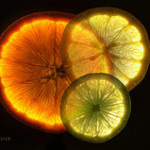 Most people may refer to lemons as a flavoring ingredient only. While others may sit down and eat an apple or orange, seldom would you see a person eating lemon like one does with a fruit. Others may drink lemonade but sugar is added to the mixture in order to mask the combination of bitter and sour tastes of lemon.
Most people may refer to lemons as a flavoring ingredient only. While others may sit down and eat an apple or orange, seldom would you see a person eating lemon like one does with a fruit. Others may drink lemonade but sugar is added to the mixture in order to mask the combination of bitter and sour tastes of lemon.
Lemon may be one of the most common items that you see in the kitchen but it can offer an overabundance of benefits to the human body particularly the liver. Not many people know of the alkalizing effect of lemon because there is a common notion that lemon is highly acidic due to its sour taste. This alkalizing power can help balance the acid levels of the body especially after drinking alcohol. Although under-appreciated, lemon can offer a detoxifying effect not only for the liver but for the whole body in general.
2. Green Vegetables
 Never underestimate the power of leafy greens. They are packed with nutrients that keep your body healthy and could be the key to your liver health. Spinach, bitter gourd, dandelion greens, mustard greens and arugula are just some of the leafy green vegetables that you can include in your diet to help in cleansing the liver, especially one that has been through a tough time cleansing your system from alcohol.
Never underestimate the power of leafy greens. They are packed with nutrients that keep your body healthy and could be the key to your liver health. Spinach, bitter gourd, dandelion greens, mustard greens and arugula are just some of the leafy green vegetables that you can include in your diet to help in cleansing the liver, especially one that has been through a tough time cleansing your system from alcohol.
Green vegetables are jam-packed with different kinds of detox compounds that can help neutralize heavy metals and acids brought by toxins to the liver. These compounds can stimulate the production of bile which is very essential in the body cleaning process that is regularly performed by the usually overworked liver.
Green vegetables can be found in practically every supermarket in your area so preparing recipes for your liver detox will not pose a great challenge. From soups to salads to other types of dishes, green vegetables can be eaten any time of day and make a delicious addition to your cleansing program. Just make sure to include a generous serving of dishes prepared from green vegetables every day. Your body, particularly the liver, will benefit to a great extent. Thanks to the health-giving compounds of these nutritional powerhouses.
3. Avocado
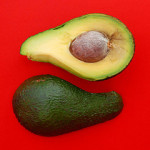 A favorite ingredient in salads, avocado is one of the best foods that you can eat if you want to promote the health of your liver. It is rich in glutathione which is a compound known to boost the cleansing power of the liver and protecting the organ from toxic overload. Some research conducted on the consumption of avocado has shown a remarkable improvement in the condition of a damaged liver after eating one or two avocadoes in a week for a period of 30 days.
A favorite ingredient in salads, avocado is one of the best foods that you can eat if you want to promote the health of your liver. It is rich in glutathione which is a compound known to boost the cleansing power of the liver and protecting the organ from toxic overload. Some research conducted on the consumption of avocado has shown a remarkable improvement in the condition of a damaged liver after eating one or two avocadoes in a week for a period of 30 days.
The good thing with avocadoes is that you can use many creative ways to include it in your meal. You can either prepare avocado salad by taking inspiration from avocado-based recipes. Surely you will be able to find hundreds of these recipes online.
4. Turmeric
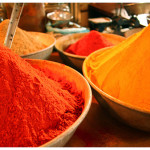 A very powerful force in liver detox, turmeric can do wonders not only in cleansing the body from toxins but also in regenerating damaged liver cells. It can help boost bile production in the liver, improve gallbladder function and reduce the size of inflamed hepatic ducts. These functions are needed to aid the liver in its huge responsibility of cleaning the system after an offensive alcohol invasion.
A very powerful force in liver detox, turmeric can do wonders not only in cleansing the body from toxins but also in regenerating damaged liver cells. It can help boost bile production in the liver, improve gallbladder function and reduce the size of inflamed hepatic ducts. These functions are needed to aid the liver in its huge responsibility of cleaning the system after an offensive alcohol invasion.
Turmeric is slightly spicy and a little sweet. Aside from using it as a spice to your dishes, you can also prepare turmeric tea for your liver detox. If you are familiar with different tea flavors, then you can compare the taste of turmeric tea to that of chai tea. A cup of turmeric tea can already do great things to your liver after a night of clubbing and drinking with your friends.
5. Garlic
 It is hard to look for a kitchen that does not have garlic stocked away in a spice basket somewhere in those drawers. This is a good thing because garlic does not only make dishes more savory but it can also come handy when you are looking for ways to detoxify your liver after a drinking bout. Garlic is known to be rich in compounds that contain sulfur which has the ability to set enzymes into motion. And these enzymes will then facilitate the process of expelling toxins from the body.
It is hard to look for a kitchen that does not have garlic stocked away in a spice basket somewhere in those drawers. This is a good thing because garlic does not only make dishes more savory but it can also come handy when you are looking for ways to detoxify your liver after a drinking bout. Garlic is known to be rich in compounds that contain sulfur which has the ability to set enzymes into motion. And these enzymes will then facilitate the process of expelling toxins from the body.
Garlic also contains high levels of selenium and allicin. These are two potent nutrients whose main purpose does not cover detoxification but also protection of the liver from the possible damages brought about by toxins.
Since it is next to impossible to eat garlic directly, the best way to use it for liver detox is by mixing a generous amount with your food. Garlic supplements are also available in the market for people who are looking for easier ways to take in garlic for detox purposes.
— — — —
The term “detoxification” has become a very popular word these days. With modern lifestyles inclined towards unhealthy ways —drinking alcohol topping the list— it is only fitting to find ways to cleanse your body if you want to add more years to your life.

Have You Heard About The “Miracle Hangover Cure” that Wired magazine, New Scientist and the NY Post are all talking about?
It’s called Dihydromyricetin and it will change the way you consume alcohol for ever! Sobur, our hangover cure supplement, uses dihydromyricetin (read more about Dihydromyricetin here) as our key ingredient, along with several other essential ingredients that replenish & restore key vitamins and minerals the body looses when you drink alcohol.
Check Out Sobur Hangover Cure Today…
Photo Credits:
- [1] Herbal Provider
- [2] photoacumen cc
- [3] anple cc
